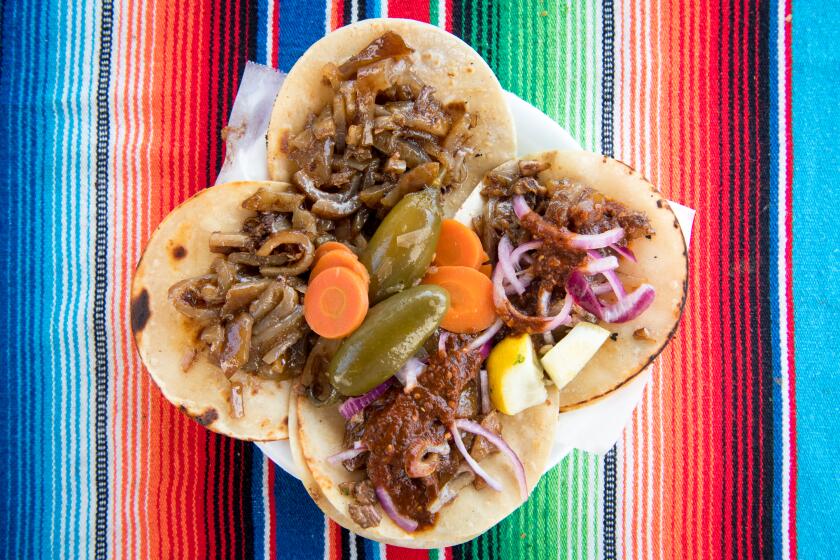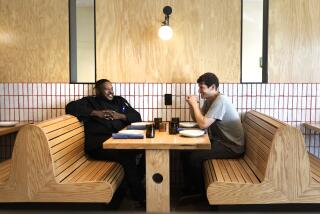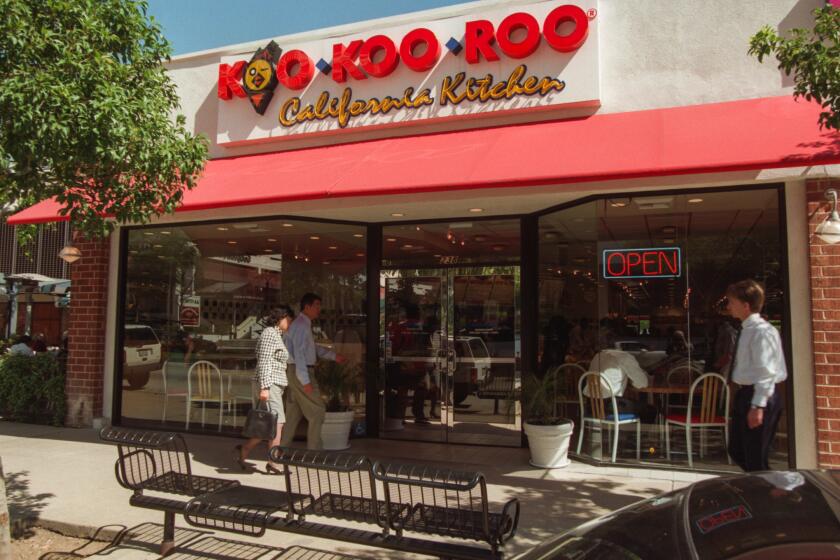With Pasjoli, one of L.A.’s best tasting-menu chefs goes à la carte French
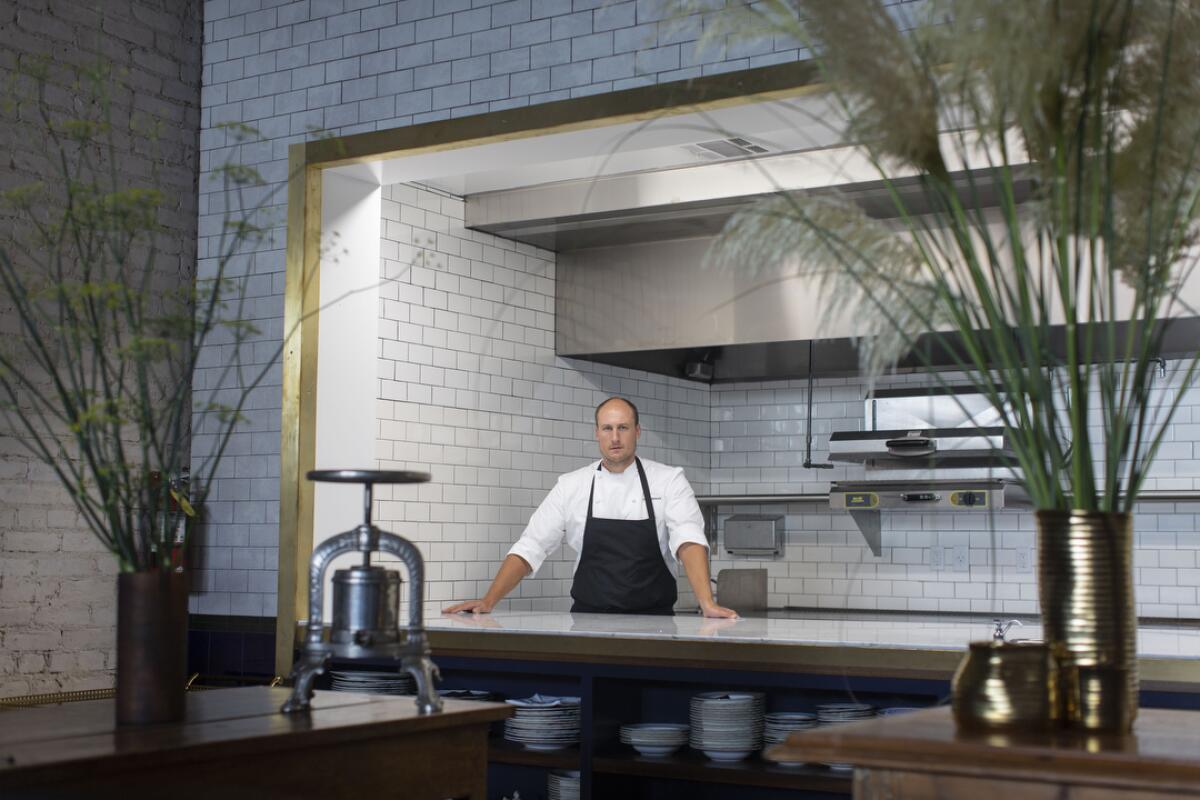
One month before Pasjoli is scheduled to open, Dave Beran is scrutinizing a creamy grayish-pink log baked into a brioche. Cut me a slice, he asks one of his cooks, who brings over two thick slabs stacked on a silver tray.
“We are battling the curse of no foie gras,” the chef says ruefully of the statewide ban. “So this” — chicken liver infused with Madeira and butter, prepared in the style of a traditional goose liver torchon — “is our take.”
After all, he continues with a wry smile, a French restaurant’s gotta have foie, and “foie” simply means “liver.”
It’s a Monday, which for the last few months has meant menu research and development for Pasjoli, Beran’s second restaurant. Situated on a beachy stretch of Main Street in Santa Monica, about halfway between the pier and the Venice Beach boardwalk, it opens Saturday.
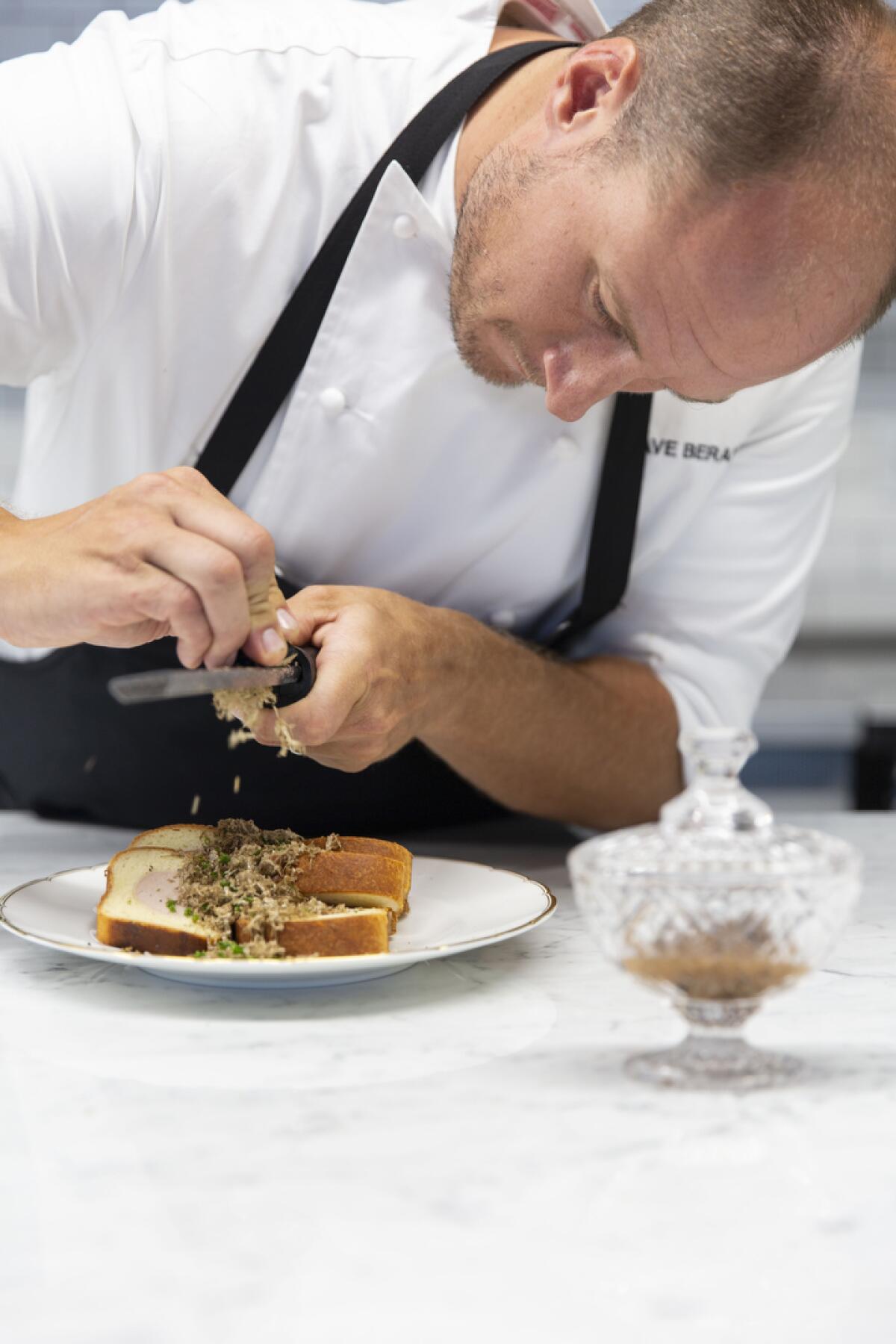
Pasjoli, until recently the home of a burger joint, is still being built, so Beran has been using his fine-dining spot Dialogue to test dishes on days the restaurant is closed. Beran’s black road bike is propped up in the middle of the narrow dining room; his backpack is slung over one of the bar chairs; a black-and-white checkered plastic tablecloth covers the chef’s counter, laden with storage containers and water thermoses.
I think most Americans perceive — not unjustly — classic French as being heavy, weighty. The French cuisine I really fell in love with deals primarily with the Parisian markets.
— Dave Beran, chef of Pasjoli
Pasjoli is the follow-up to Beran’s tiny tasting-menu-only restaurant. Opened in 2017 on the second floor of a Third Street Promenade food hall, Dialogue was an eagerly awaited debut from a chef fresh off a decade at two of Chicago’s most celebrated restaurants. Almost immediately, Beran’s thoughtful menu progression and Dialogue’s intimate setting — half of the diners sit at a counter facing the chefs; conversation flows between the two sides for much of the three-hour meal — cemented its place among the best of the small but growing number of elite high-end restaurants here. In June, Dialogue was awarded a Michelin star.
Beran wanted to open an à la carte restaurant when he moved to Los Angeles three years ago. But negotiations for a cavernous dual space downtown (a tasting-menu restaurant called Jolie was to inhabit the location alongside a more low-key French spot) fell through. Instead, he opened Dialogue, backburnering the à la carte idea.
Pasjoli — so named because Beran kept referring to his sophomore restaurant as “not Jolie” — fulfills that original vision. It’s a change of pace and format for the 38-year-old, known for crafting elaborate tasting menus intricate in skill and fleeting in nature.
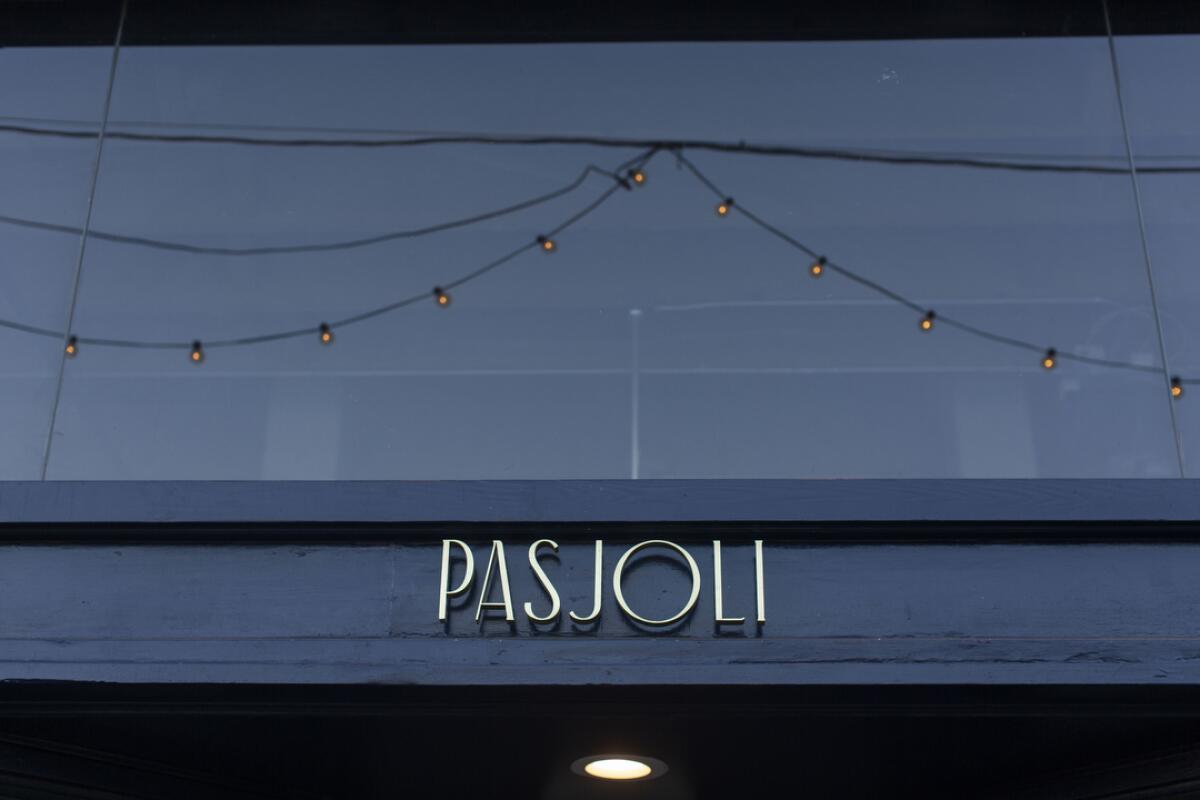
During his five years as executive chef at Grant Achatz’s Next, Beran created 15 shape-shifting menus that ventured through different countries and different eras: There was Paris 1906 one season and Modern Chinese another; a carnivorous Hunt menu was followed by an entirely vegan one; another offered a sentimental exploration of the culinary joys of childhood. Every menu would last a few months before being replaced by a new theme.
At Dialogue he overhauls the 20-or-so-course modernist menu every spring, summer, fall and winter: Each is rooted in the current season, bookended with dishes inspired by the one that preceded it and the one to follow.
Restaurant critic Bill Addison pinpoints seven recent reviews, from a carnitas food truck to a tiny Japanese wonder, that illustrate the city’s amazing dining culture.
Although Beran has embraced ephemeral menus throughout his career, he wanted to cook French at Pasjoli because, he says, “It’s what I started cooking first. I love it.”
“There’s a lot of versatility in French cuisine: the precision and depth of flavor that you develop with the sauce work, and the different techniques,” he continues. “It’s just a fun cuisine to cook.”
Today, Beran and his team are working on four dishes: a pâté en croûte (“a little boozy,” he says after a taste); sweetbreads with roasted carrots (“It’s getting there ... it’s a good C+”); chicken cooked in Champagne (“tastes great”); and the “foie” brioche (“Flavor-wise, that’s about right”).
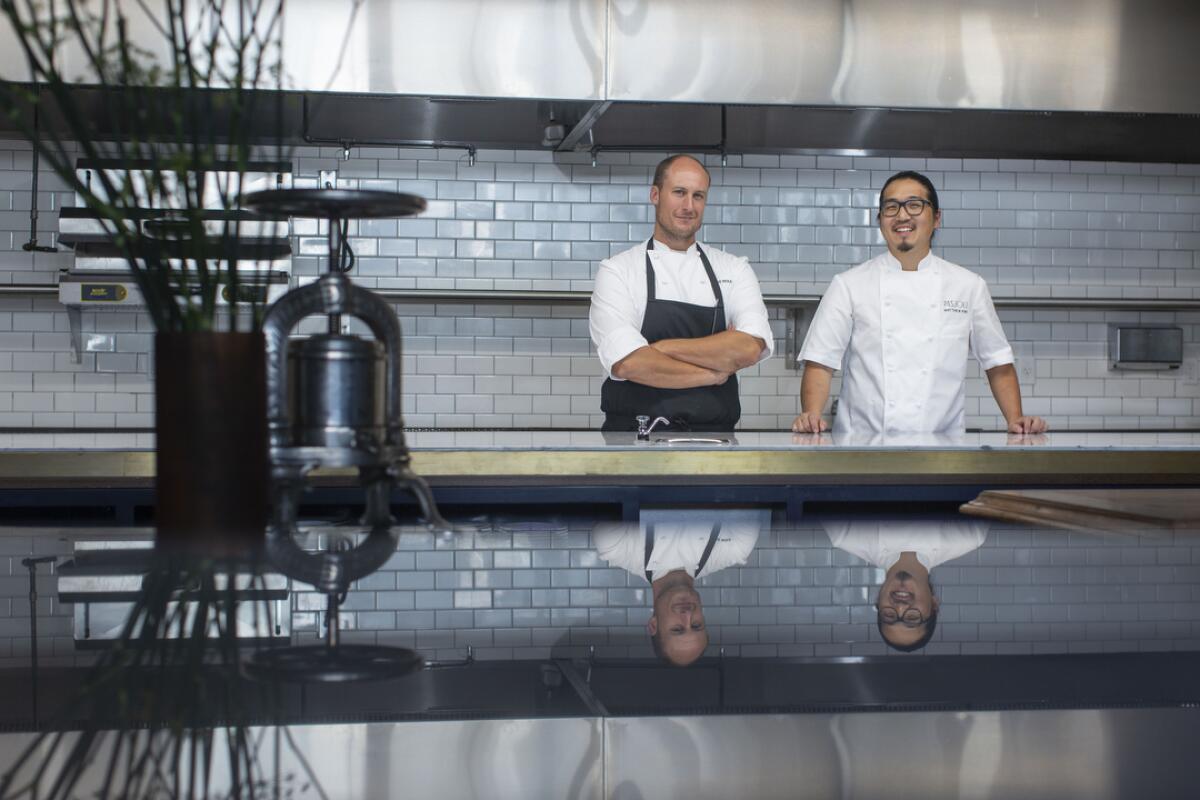
As Matthew Kim, his sous chef at Dialogue and Next and the soon-to-be chef de cuisine at Pasjoli, tinkers with the pâté, Beran is hunkered down at the corner table, laptop open, poring over notes on French dishes he cooked during his years at Alinea and Next.
“I think most Americans perceive — not unjustly — classic French as being heavy, weighty,” Beran says. It’s a notion he wants to dispel at Pasjoli, which he’s taken to calling PJ.
“The French cuisine I really fell in love with deals primarily with the Parisian markets. If you go at the right time of the year, it’s not about the weight, it’s about the freshness,” Beran says. He wants to showcase that lesser-known, lighter side of French cooking at Pasjoli, bolstered by Southern California’s seasonal produce.
There will not be steak frites. No beef bourguignon. No escargot. We didn’t want to do what was expected.
— Dave Beran, chef of Pasjoli
That means deliberately veering Pasjoli’s opening menu away from overly rich or obvious staples that pervade many French menus in America.
There won’t be a melty cheese bomb French onion soup, and “we’re not going to have French fries either. No deep fryer. We’re making a stand,” Beran says good-naturedly later that afternoon during a stop at Pasjoli, where he’s looking over the day’s construction work and unboxing the ornate light fixtures that were just delivered.
“There will not be steak frites. No beef bourguignon. No escargot.”
Why not?
“We didn’t want to do what was expected,” he says.
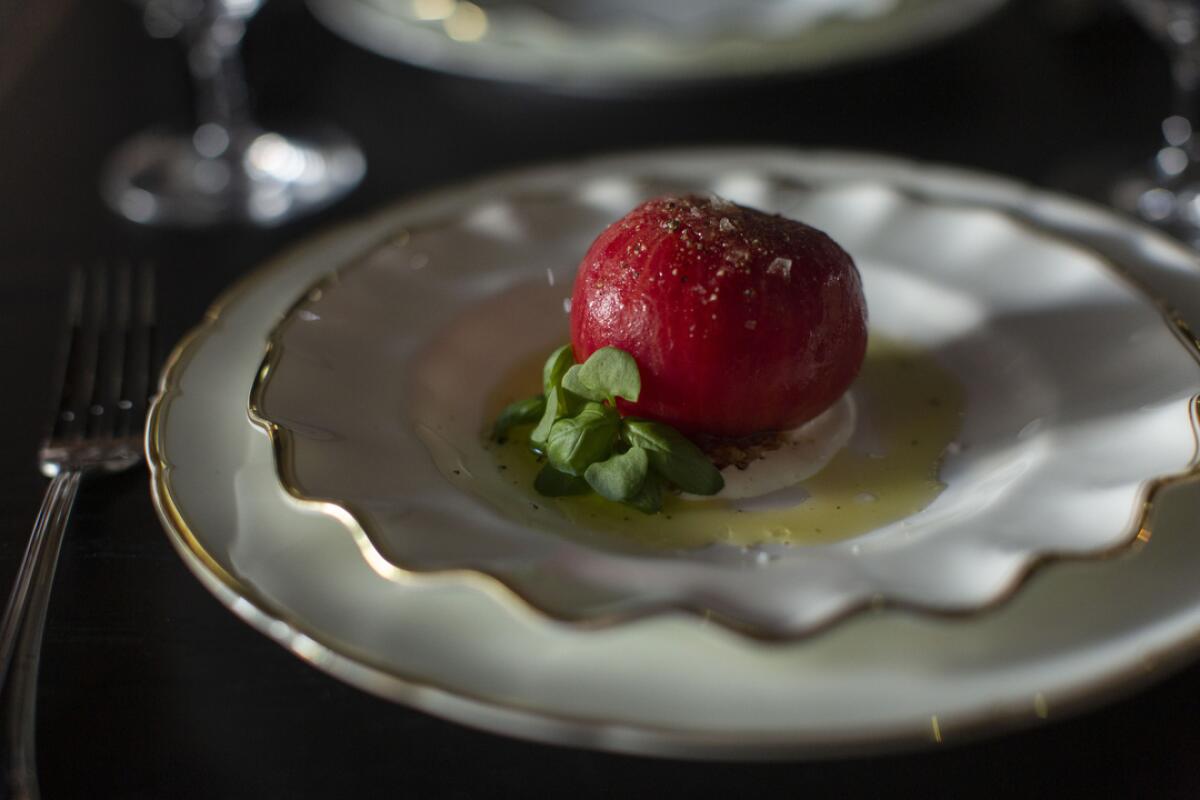
There will still be classics — a caramelized onion and Gruyère tart; skate meunière with brown butter; a whole roast duck for two made with the antique duck press that was a hallmark of Dialogue’s early days — but the Pasjoli team will have flexibility when it comes to traditional French.
“We’re not going to shy away from using a lime if a lime makes sense,” Beran says, “even if you might not find a lime in Paris for that dish.”
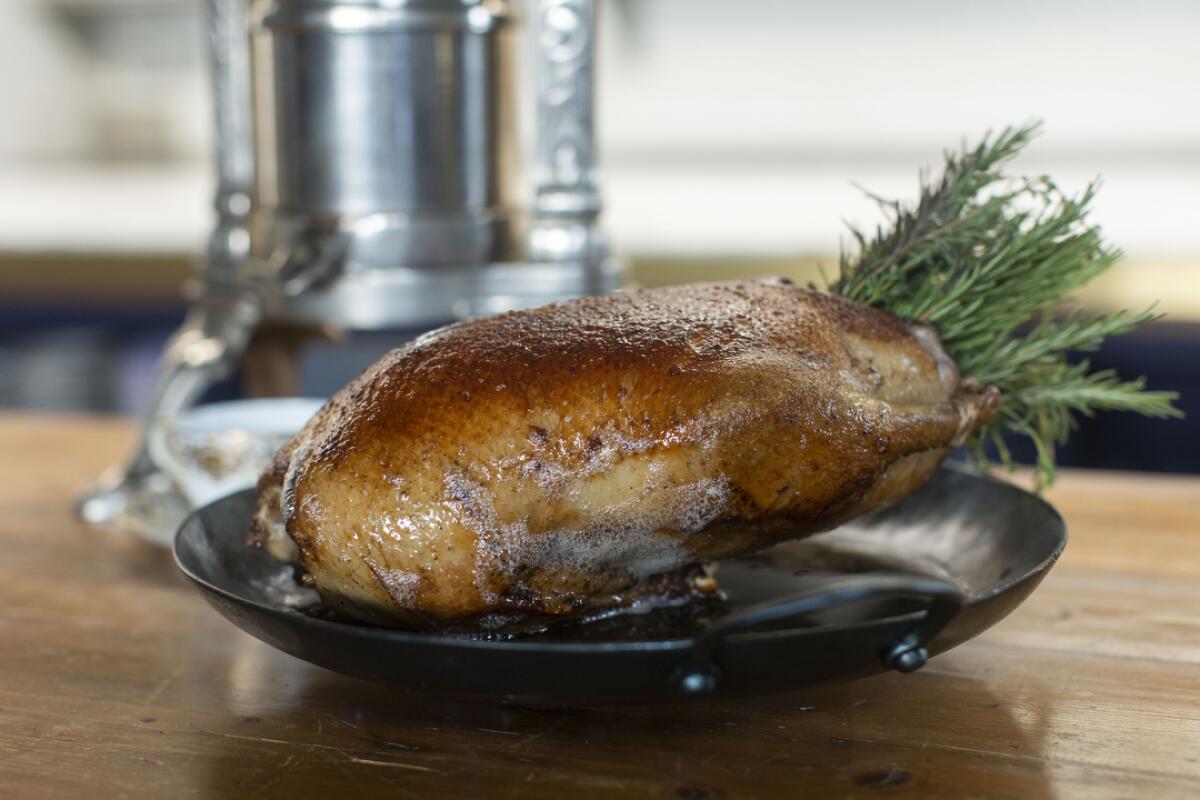
Pasjoli will be larger and more laid-back than Dialogue (which has only 18 seats and one $235 tasting menu; Beran is planning to move the restaurant to a bigger space) and will make Beran’s cooking more accessible to a wider subset of diners. But he cautions it won’t be a super-casual everyday bistro — he hopes customers will view it on the same level as Felix: a nicer-occasion neighborhood restaurant but also one that’s worth a trip to the Westside.
Besides pushing back against obvious French fare, Beran is also over small shared plates, a trend that he says makes things easy for the kitchen at the expense of the diner experience. So Pasjoli’s menu features standard-sized appetizers, entrees and desserts — “things that are yours” and paced accordingly, he says — as well as a few items meant for sharing, such as the duck and a tableside caviar service that will be rolled out on an antique brass cart.
Not long after the U.S.
“It’s going to be a challenge to retrain diners back to ordering their own food,” Beran predicts.
Despite its name — “pasjoli” translates to “not pretty” — the restaurant has become a looker after a nine-month buildout: a bit eclectic and whimsical, very Midcentury French. “What it turned into was if Wes Anderson designed a French bistro,” Beran says.
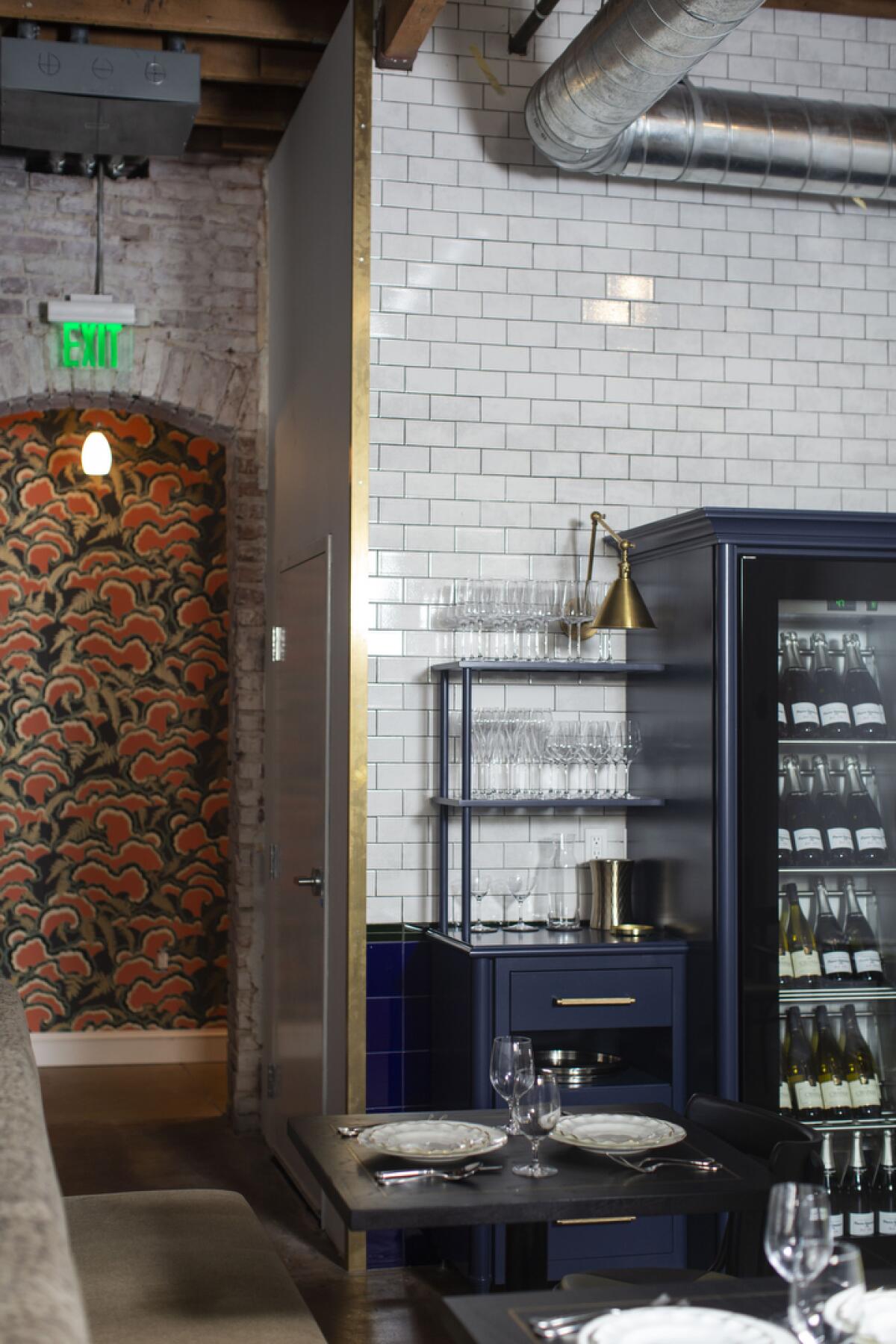
He chose a lush midnight blue for the main wall’s sweeping arches, and silk hand-painted floral wallpaper to go underneath them. Brick, brass, white tile and antique mirrors fill out the rest of the nearly 4,000-square-foot, two-room space.
“Everything we’ve done here has started with that picture of that, like, old guy sitting at a round table in St. Germain outside of a restaurant with his baguette and his cigarette, his glass of red wine and a newspaper,” he says. “And everything should make you feel like that, no matter what.”
Pasjoli, 2732 Main St., Santa Monica. The restaurant will open with dinner service only, Wednesdays through Sundays, with plans to expand to daily service soon.
More to Read
Eat your way across L.A.
Get our weekly Tasting Notes newsletter for reviews, news and more.
You may occasionally receive promotional content from the Los Angeles Times.

